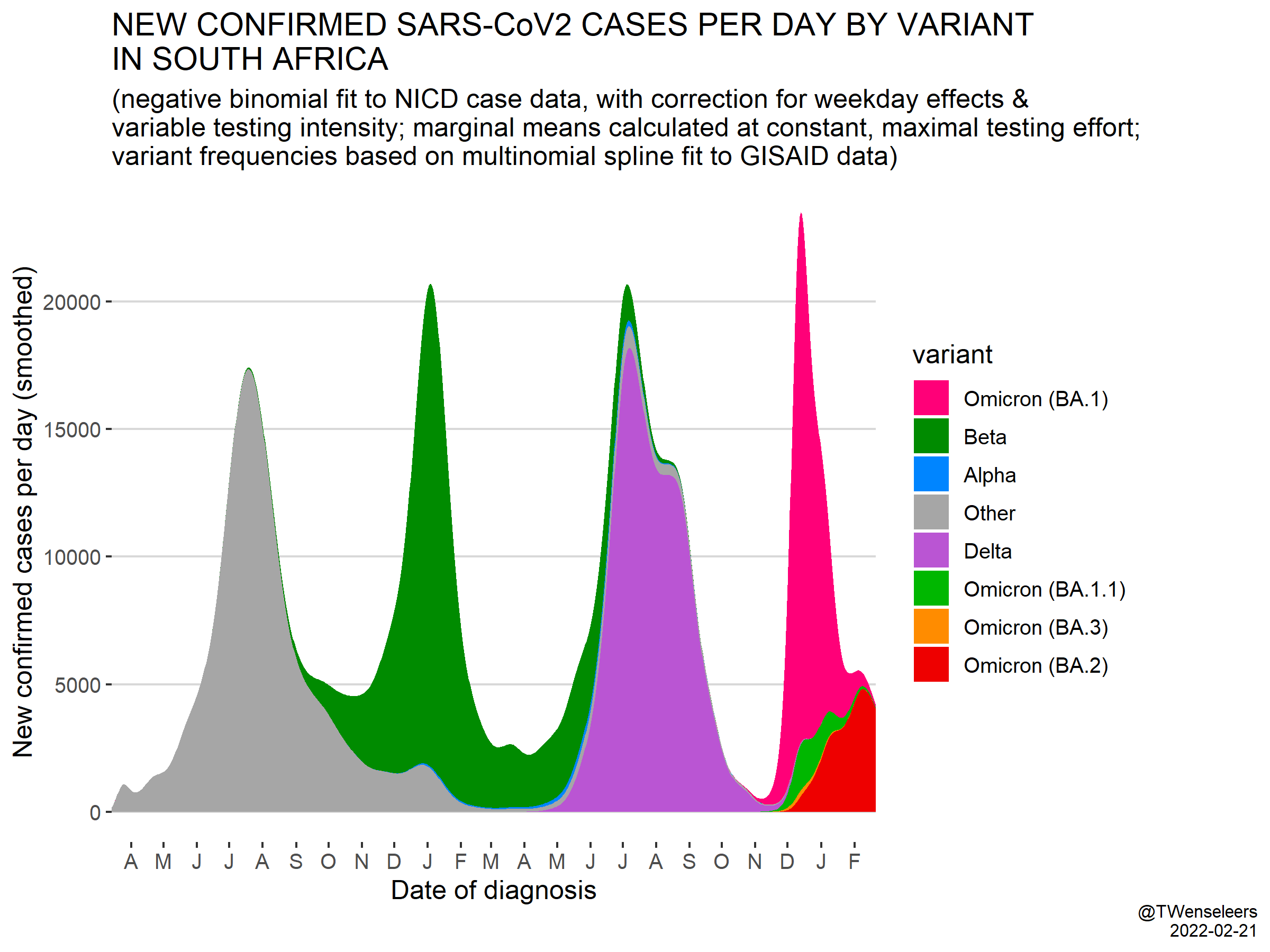This post might look like it has a fair amount of stuff in it, but it’s four days’ worth (because of the Canadian stat holiday yesterday). I have noticed a big drop in the amount of content to pull from. I’m not even seeing a lot of “how do we transition to post-pandemic” articles now. It seems like people want it to be over, nevermind all the people who are sick and dying still.
Transmission
This preprint says that reinfections in Italy have been extremely rare: 0.31%, and didn’t really change over 18-22 months. (This means that protection from prior infection is quite durable.) Reinfections were more common in people who had not been vaccinated, and more common with Omicron.
This paper from South Africa between Oct 31 and Dec 11, 2021 found that:
- Pediatric hospital admissions went up before adult hospital admissions did;
- 99% of the pediatric cases sequenced were Omicron;
- none of the kids and 92% of the parents (that they had info for) were unvaccinated;
- 63% of the admissions were for kids under 4 years old;
- 44% of the cases were “for” COVID-19 (vs. “with”);
- 20% needed oxygen therapy;
- 7% were ventilated;
- 3% died.
This preprint says they found some bat coronaviruses in Laos which are really really close to SARS-CoV-2.
Variants
This preprint says that boosters provide about the same level of antibody neutralization against BA.2 as against BA.1 (what we mostly call “Omicron”), and that antibodies from people who were infected with BA.1 are able to neutralize BA.2 well.
This preprint shows that in South Africa, people infected with BA.2 were no more or less likely to end up in hospital than people infected with BA.1.
This preprint from Denmark says that out of 187 infections between November 22, 2021, until February 11, 2022, 47 (25%) were BA.2 infections after a BA.1 infection among 1,056 people who had their infections sequenced. From this, the authors concluded that BA.2 infections after a BA.1 infection did happen but were rare; I am baffled: 25% seems awfully damn common to me. Maybe they meant that 47 BA.1->BA.2 infections out of 1,056 reinfections was rare? But what were the patients going to get reinfected with if not BA.2? I believe that only BA.2 and BA.1 are circulating right now in Denmark, and presumably BA.1 gives immunity against BA.1 reinfection? (The paper mentions that 88% of cases in Denmark are now BA.2.)
This tweet has graph below of variants in South Africa. BA.2 is just extending the tail of BA.1, not shooting up again.

Long COVID
This preprint says that COVID-19 leaves damage in kids’ lungs, even if they don’t present with Long COVID or with the really major obvious signs.
Vaccines
This paper says that among people who had a severe allergic reaction to their first shot, only 0.16% had a severe reaction to their second. 13.65% had a mild reaction.
This preprint found, among other things, that antibody levels before a third dose of an mRNA vax were inversely correlated with how big a boost the third dose gave to antibody levels. They suggested that high antibodies might interfere with reactivation of immune memory. This makes me think that BC was correct to insist on a six-month interval between dose2 and dose3.
Recommended Reading
If you are a absolutely faithful reader of this blog, I don’t think there will be anything in this article (NYT, probably paywalled, sorry) which is new, but it is a very well packaged summarization of what the absolutely bleeding-edge science about Long COVID is.
This article talks about how the massive need for PCR tests made PCR machines more widely available and made their utility clear, and talks about their future potential.
This article talks about how we (which means the US, but some things are applicable to Canada) are not ready for “the new normal”.
